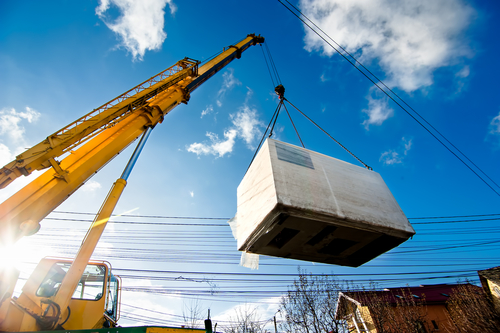Yesterday, we looked at Occupational Safety and Health Administration’s (OSHA) extension of the certification deadline for crane operators—and noted that employers are still required to provide comprehensive training for crane operators. One element of that training includes ensuring that operators can recognize, based on both visual and auditory inspection, the shift inspection elements required by OSHA. Today we’ll look at just what those requirements are.

OSHA’s shift inspection requirements for cranes are found in 29 CFR 1926.1412(d). Before each shift, a competent person must begin a visual inspection of the equipment; the inspection must be completed before or during the shift. This inspection is a visual observation intended to identify apparent deficiencies; taking apart equipment components and booming down is not required unless the visual inspection or trial operation suggests that this is needed.
OSHA’s shift inspection requirements for cranes are found in 29 CFR 1926.1412(d). Before each shift, a competent person must begin a visual inspection of the equipment; the inspection must be completed before or during the shift. This inspection is a visual observation intended to identify apparent deficiencies; taking apart equipment components and booming down is not required unless the visual inspection or trial operation suggests that this is needed.
Join us for an in-depth webinar on November 5 to learn more about Workplace Violence: How to Assess Risks to Protect Employees and the Public.
Minimum Inspection Requirements
The training requirements for crane operators are found in 29 CFR 1926.1430. Under that standard, employers are required to provide operators-in-training with instruction in the topics covered by the crane certification standards in 1926.1427, which include:
At a minimum, the inspection must cover all of the following:
- Control mechanisms: look for maladjustments interfering with proper operation.
- Control and drive mechanisms: look for apparent excessive wear of components and contamination by lubricants, water, or other foreign matter.
- Air, hydraulic, and other pressurized lines: look for deterioration or leakage, particularly those which flex in normal operation.
- Hydraulic system: check for proper fluid level.
- Hooks and latches: look for deformation, cracks, excessive wear, or damage such as from chemicals or heat.
- Wire rope reeving: look for compliance with the manufacturer’s specifications.
- Wire rope: Detailed instructions for the inspection of wire rope are found in 29 CFR 1926.1413.
- Electrical apparatus: look for malfunctioning, signs of apparent excessive deterioration, dirt or moisture accumulation.
- Tires (when in use): look for proper inflation and condition.
- Ground conditions around the equipment: look for proper support, including ground settling under and around outriggers/stabilizers and supporting foundations, ground water accumulation, or similar conditions.
- The equipment position: make sure it is level within the tolerances specified by the equipment manufacturer’s recommendations, both before each shift and after each move and setup.
- Operator cab windows: look for significant cracks, breaks, or other deficiencies that would hamper the operator’s view.
- Rails, rail stops, rail clamps, and supporting surfaces when the equipment has rail traveling. This provision does not apply to rail systems covered by the Federal Railroad Administration.
- Safety devices and operational aids: look for proper operation.
Want to receive Continuance of Certification (COC) credit? Here’s how! Join us on November 5 for an in-depth webinar where our seasoned presenter will provide clear understanding of the challenges involved and strategies for developing an effective and compliant program.
If any deficiencies are identified in any of the elements above, or in any additional requirements specific to the equipment, the competent person must make an immediate determination as to whether the deficiency constitutes a safety hazard. If the deficiency is determined to constitute a safety hazard, the equipment must be taken out of service until it has been corrected.
If any deficiency in safety devices or operational aids is identified, additional corrective action may be required under 29 CFR 1926.1415 or 29 CFR 1926.1416.
Are all of these training and inspection requirements just too much to sort out on your own? Help is available from BLR®!

For minimum crane inspection requirements, it is important to mention:
– Barricading the work area,
– Checking warning sound and light of the crane when in mention.